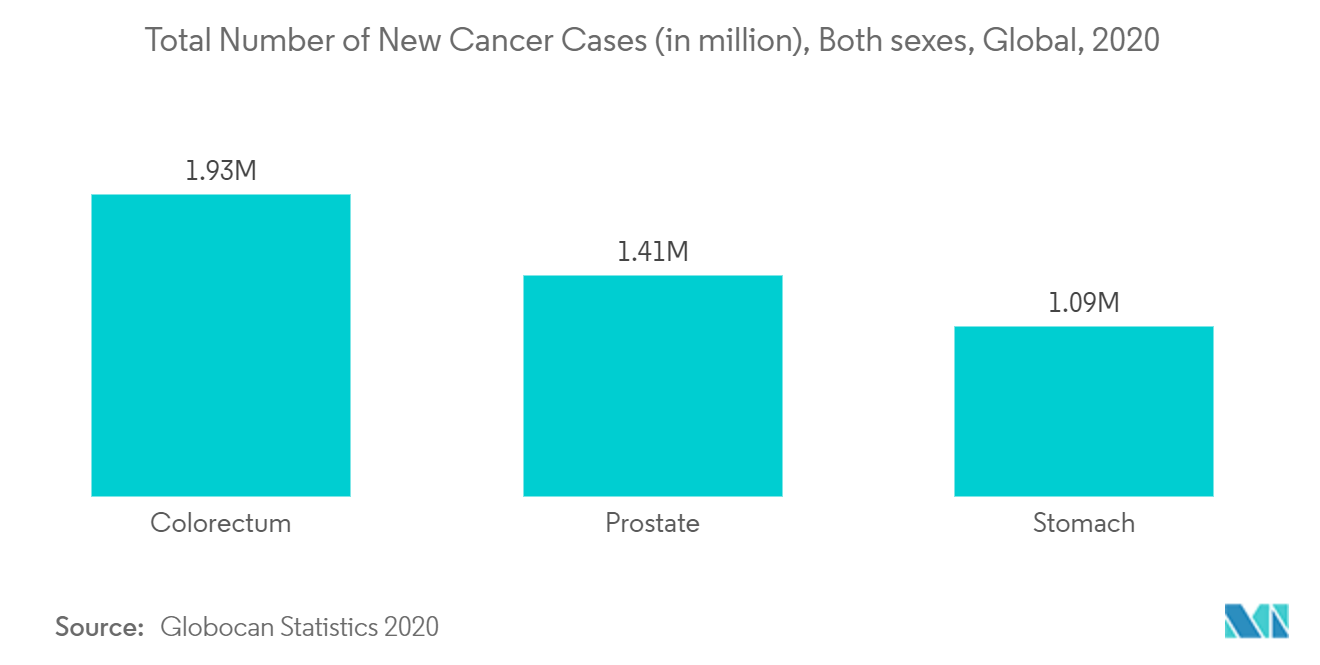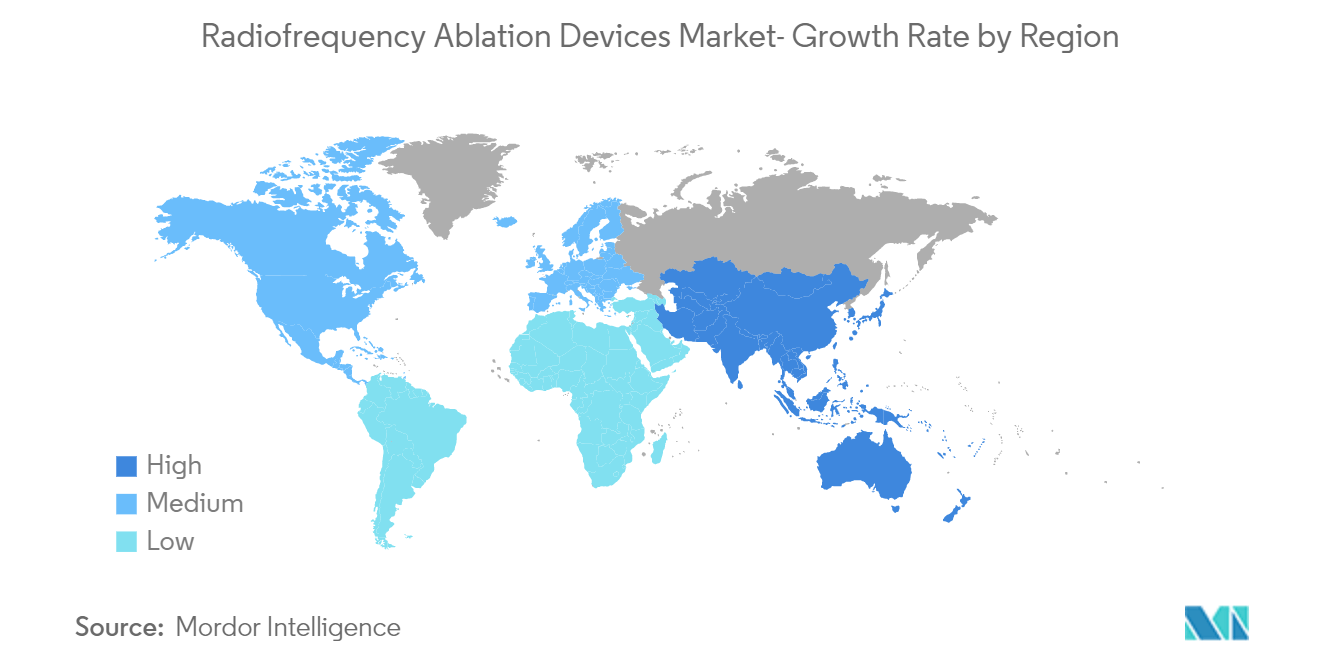Market Trends of Global Radiofrequency Ablation Devices Industry
This section covers the major market trends shaping the Radiofrequency Ablation Devices Market according to our research experts:
Oncology Segment is Expected to Account for the Largest Market Share During the Forecast Period
The oncology segment holds a major share of the radiofrequency ablation devices market. The rising number of cancer cases around the world is adding to segmental growth. For example, a September 2021 World Health Organization (WHO) update stated that cancer resulted in approximately 10 million deaths worldwide. The most common cancers in 2020 (according to new cancer cases) were: breast cancer (2.26 million cases); lungs (2.21 million cases); colon and rectum (1.93 million cases); prostate (1.41 million patients); skin (non-melanoma) (1.20 million cases); and stomach (1.09 million cases). This increase in the number of cases over the years is majorly contributing to the increase in surgical therapies for efficient treatments, which in turn will propel the demand for ablation devices.
Furthermore, according to an article published by RadiologyInfo.org updated in February 2021, radiofrequency ablation (RFA), a minimally invasive treatment for cancer, employs an image-guided technique to apply heat to destroy cancer cells. RFA uses ultrasound, computed tomography (CT), or magnetic resonance imaging (MRI) to guide a needle electrode into a cancerous tumor and passes high-frequency electrical currents through the electrode to ground pads placed on the body, thereby creating focused heat that destroys the cancer cells surrounding the electrode. The article also suggested that radio frequency and microwave ablations are the most commonly used ablation treatment methods for cancer therapy.
In addition, the growing investment in research and development will also increase the availability of radiofrequency ablation devices in the treatment of various types of cancer, thereby accelerating the segment's growth. For example, the study titled "Endoscopic Radiofrequency Ablation (RAF) Combined With Gemcitabine and S-1 in Patients for Unresectable Cholangiocarcinoma: A Randomized Open-Labeled Clinical Trial" was initiated in January 2020 by the First People's Hospital of Hangzhou to compare the efficacy and safety of RAF combined with Gemcitabine and S-1 in patients with unresectable cholangiocarcinoma. This study is expected to be completed by June 2022. Therefore, the positive results from such practices will spur the segment's growth.
Therefore, the studied segment is expected to project lucrative growth over the analysis period.

North America is Expected to Hold a Significant Share in the Market and Expected to do Same over the Forecast Period
The primary driving factors for the growth of the North American radiofrequency (RF) ablation devices market are the increasing prevalence of chronic diseases; increasing demand for minimally invasive surgeries; increasing product launches; and rising strategic initiatives by key market players. The United States is expected to hold a significant share in the studied market in the North American region during the forecast period. For instance, according to the estimates of the 2022 American Cancer Society, Inc., about 236,740 new cases of lung cancer will be diagnosed in the country in 2022. The same source also stated that 79,000 new cases and 13,920 deaths will be reported in 2022 from kidney cancer. Thus, the high burden of cancer is expected to boost the demand for ablation devices, thereby driving the market growth.
Moreover, strategic initiatives undertaken by the key market players, such as product launches, partnerships, new programs, mergers, and acquisitions, are likely to drive market growth. For instance, in February 2021, the Food and Drug Administration approved Medtronic's DiamondTemp irrigated ablation catheter in the RF cardiac ablation space, designed to treat patients with recurrent atrial fibrillation that has not responded to drug therapies.
Furthermore, in November 2020, Abbott launched the IonicRF Generator, which is expected to deliver a non-surgical, minimally invasive treatment for managing pain in the nervous system. The IonicRF Generator is a radiofrequency ablation device that uses heat to target specific nerves and block pain signals from reaching the brain. Thus, launching such products will expand the company's offerings and geographical footprint, driving market growth over the forecast period.
Thus, these aforementioned factors are anticipated to boost the growth of the market in the region over the coming years.


